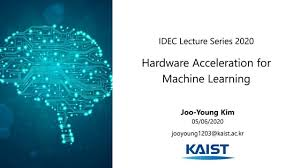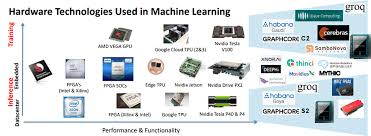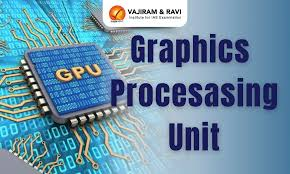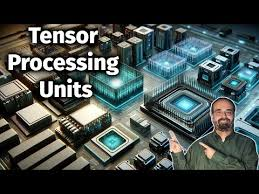comprehensive guide to Hardware Acceleration and Optimization of Machine Learning Models 2024
The rapidly advancing field of machine learning (ML) is pushing the boundaries of what’s possible with AI applications. As ML models grow in complexity, they demand increasingly powerful computing hardware. Hardware accelerators, such as GPUs, TPUs, FPGAs, and ASICs, are becoming essential to effectively optimize and run ML models, especially in resource-intensive applications like deep learning (DL). In this blog, we will explore how hardware accelerators are optimizing ML models, the importance of AI accelerators, and how these technologies are transforming machine learning performance.
Why Hardware Acceleration Matters for Machine Learning

The core of machine learning lies in processing vast amounts of data and running complex algorithms, requiring heavy computational resources. Traditional CPUs are often too slow and energy-inefficient to handle the demands of modern ML applications, which can involve operations like matrix multiplications and backpropagation in deep neural networks.
Hardware accelerators are specialized processors designed to handle specific tasks more efficiently than general-purpose CPUs. For example, they can accelerate vector operations, matrix multiplications, and other mathematical operations critical to ML tasks. The optimization of these hardware components ensures faster training and inference times, enabling more practical and scalable AI solutions.
Key Hardware Accelerators for Machine Learning

1. Graphics Processing Units (GPUs)

GPUs are widely used in machine learning due to their massive parallel processing power. They contain thousands of smaller processing units that allow for the simultaneous execution of many tasks, making them ideal for the heavy mathematical computations involved in deep learning.
- NVIDIA GPUs, such as the Tesla V100 and A100, are specifically designed for AI workloads. These GPUs accelerate matrix operations, which are at the core of many ML models, and improve training times significantly compared to traditional CPUs.
- GPU Optimizations: Libraries like cuDNN and CUDA allow for GPU-accelerated training and inference in ML frameworks like TensorFlow and PyTorch.

Developed by Google, Tensor Processing Units (TPUs) are application-specific integrated circuits (ASICs) designed specifically for ML workloads. TPUs are tailored for high throughput of matrix multiplications, a key operation in deep learning.
- TPUs offer significant performance gains over GPUs, especially in large-scale deep learning tasks like training massive neural networks.
- Cloud TPUs are available for use through Google Cloud, offering businesses scalable, high-performance AI applications.
3. Field-Programmable Gate Arrays (FPGAs)
FPGAs are reconfigurable hardware accelerators that allow users to program the hardware itself to perform specific tasks. Unlike GPUs and TPUs, FPGAs are not fixed-function devices; instead, their functionality can be customized to accelerate specific ML algorithms.
- FPGAs offer low-latency and energy-efficient solutions, making them ideal for edge devices where power consumption is a concern.
- Intel’s FPGA-based solutions and Xilinx FPGAs are popular choices for deploying ML models in resource-constrained environments, such as mobile or industrial applications.
4. Application-Specific Integrated Circuits (ASICs)
ASICs are custom-designed chips optimized for specific tasks. Unlike GPUs and FPGAs, ASICs are designed for a single purpose and cannot be reprogrammed. These chips are extremely efficient for ML models where the tasks are well-defined, such as specific matrix multiplications or other fixed algorithms.
- Google’s TPU is an example of an ASIC that accelerates TensorFlow operations and has been optimized for training and inference tasks in deep learning models.
5. Neuromorphic and Quantum Accelerators
Neuromorphic computing and quantum accelerators are emerging areas in the field of hardware acceleration for ML models. These systems mimic the brain’s architecture and quantum mechanics to improve learning efficiency.
- Neuromorphic architectures, like TrueNorth and SpiNNaker, aim to replicate the way human neurons process information, offering a highly efficient method for training neural networks.
- Quantum computing is exploring quantum ML accelerators, which use qubits and quantum superposition to exponentially speed up ML model computations for specific types of problems.
Performance Metrics for ML Accelerators
When evaluating hardware accelerators for ML, the following performance metrics are typically considered:
- Instructions Per Second (IPS): Measures the speed at which a processor can execute instructions. However, it is less accurate for measuring the performance of AI processors due to the complex nature of AI algorithms.
- Floating Point Operations Per Second (FLOPS): Measures the number of floating-point operations that can be executed per second. This is a more relevant metric for ML processors because many AI tasks rely on floating-point calculations.
- TOPS (Tera Operations Per Second): This metric is used specifically for AI accelerators. It measures the total number of multiply-accumulate (MAC) operations, a core operation in deep learning models. TOPS is particularly relevant for assessing the throughput of AI accelerators.
- Throughput Per Cost (Throughput/$): This metric evaluates the cost-effectiveness of an AI accelerator by dividing its throughput by its cost. The best accelerators provide high performance at a low cost, which is crucial for large-scale deployments.
Key Design Objectives for AI Accelerators
When designing hardware for ML, several key objectives must be met to ensure effective performance:
- Processing Speed: The AI accelerator must enable faster training and inference, allowing machine learning experts to iterate quickly on models and optimize them for various tasks.
- Power Efficiency: Given the increasing demand for mobile and embedded systems, low-power designs are essential for running machine learning models without draining the battery.
- Compact Size: The size of the device is particularly critical for wearable devices, smartphones, and IoT applications. Smaller accelerators allow for more compact and portable systems.
- Cost: The cost of AI accelerators must be optimized to ensure scalability across industries, from research to commercial applications.
Conclusion: The Future of ML Hardware Acceleration
Hardware accelerators are transforming machine learning by providing the processing power and energy efficiency needed to handle complex models and large datasets. GPUs, TPUs, FPGAs, and ASICs are already improving the efficiency of training and inference, enabling AI models to scale while reducing energy consumption.
As we continue to push the boundaries of machine learning, new technologies like neuromorphic chips, quantum accelerators, and AI wafer chips will further revolutionize the industry. The continuous advancements in hardware optimization and accelerator design will lead to faster, more efficient machine learning models, with applications spanning from autonomous vehicles to smart cities and beyond.
With the right combination of hardware accelerators, machine learning models can reach their full potential—faster, smarter, and more energy-efficient than ever before.